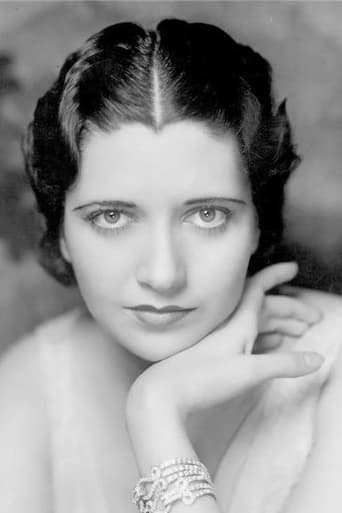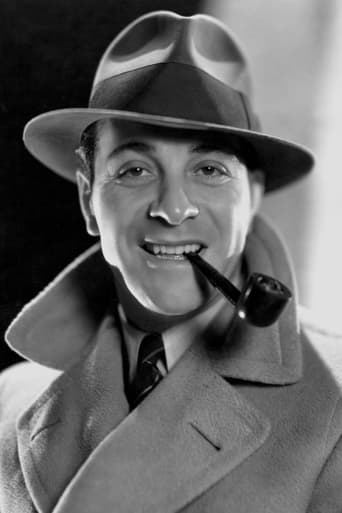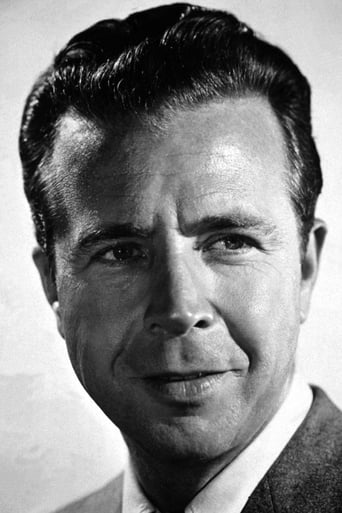Beystiman
It's fun, it's light, [but] it has a hard time when its tries to get heavy.
BelSports
This is a coming of age storyline that you've seen in one form or another for decades. It takes a truly unique voice to make yet another one worth watching.
Usamah Harvey
The film's masterful storytelling did its job. The message was clear. No need to overdo.
mark.waltz
Before the Hays code came along with their scissors and snipped the sin out of Hollywood, you would get films like this where the girls went wild, boys would be boys (Wooo!!!) and old married couples from the mid west went to New York or Paris or Monte Carlo and dropped their partners for the night for some fun with a good time girl or a gigolo. While this is not a great movie by any means, it is still a lot of fun, and it is more innuendo than actual open sinning going on.Al Jolson is the headliner at the Wonder Bar in Paris, a nightclub where the elite go to toss down a few martinis, escape from their nagging wife or forget that they are married to an older businessman who spends more time in the office than trying to have fun. Dolores Del Rio and Ricardo Cortez are the dancing team who are having a bit too intense of a time ("He Wips Her, But She Likes It!" is one of the dances they do) as he is involved with other women, most seriously bored wife Kay Francis. She is the one with the busy businessman husband, and she is very wary of the working relationship between Cortez and Del Rio.Also involved are the comic relief older couples of Ruth Donnelly and Guy Kibbee, and Louise Fazenda and Hugh Herbert. The men want to spend an evening with some pretty French girls, while the two women flirt with two sleazy gigolos. They spend the evening trying to get rid of the other, which results in some comical double entendres. Fifi D'Orsay is one of the French working girls which must have inspired Stephen Sondheim to cast her 36 years later in "Follies" on Broadway to sing "Ah, Paris!".After Jolson gets things started with the title tune, we are treated to some glorious production numbers. The classy "Don't Say Goodnight" just seems to go on forever (spacewise, not lengthwise) with its use of mirrors on three sides of the stage, and is truly a romantic moment. Much more controversial (other than the sudden dance with two men, the one cutting in pushing the woman out of the way) is the "Goin' to Heaven on a Mule" which utilizes every black stereotype there is. A huge white heaven with a smaller black heaven next door (segregated, you know...) and a heavenly nightclub set on Heaven's own Lennox Avenue. Then, a black-faced Hal LeRoy tap dances out of a giant watermelon while Jolson (you expect him in blackface) feasts on a chicken roasted for him in which you see the poor bird plucked by a machine & skewered onto a roaster. Utilized in the documentary "It Came From Hollywood" as an example of Hollywood's bad taste in making some musicals, it has survived its controversy and not been exorcised out of prints. Most audiences simply look at it as an artistic triumph in spite of its bad taste that has taught us lessons and is an example of where Hollywood used to be and has moved far away from. Still, it is light-hearted compared to the same year's "Pickin' Cotton" from "George White's Scandals" in which a huge mammy character raises her skirt so a dozen or so black-faced children can run out from underneath it!When Jolson is in front of an audience singing, there is a joy exhilarating from him like the shining of a star. He isn't so comfortable in the serious acting sequences. Kay Francis, obviously upset by being secondary to Del Rio, suffers as a result of her unhappiness with the role, although the bitterness she feels somehow matches that of the character. What makes it worse is that Francis and Del Rio sometimes appear to have similar looks (with the widows peak hairstyle) but Del Rio is much more exotic looking. Dick Powell is on only to sing a few songs and adds only incidental plot development. Cortez once again plays a sleazy character (much like the same year's "Mandaly", which co-starred Francis in a much better part) who is not so likable. The four older character actors offer much needed humor to the somber plot which includes a murder, a suicide and eventually cover up. As Jolson would say, it's all in a night's work.
mgconlan-1
I love "Wonder Bar." I love it in all its vulgarity and I even love the "Goin' to Heaven on a Mule" number despite Busby Berkeley's seeming determination to include virtually every ridiculous racist stereotype of Blacks. "Wonder Bar" seems to me to be one of the few Berkeley movies (like "Gold Diggers of 1933" and "Footlight Parade") whose plot is genuinely interesting and entertaining in itself and not just an excuse to set up the spectacular numbers. The alternation between drama and comedy which bothers some of the other reviewers is one of the best things about this film; it gives it a contemporary quality even if some of the numbers badly date it. Lloyd Bacon's direction is unusually stylish for this generally hacky filmmaker, the Harry Warren/Al Dubin songs are at least serviceable and sometimes better than that, and though Warners was dubious enough about Al Jolson's continued popularity that they surrounded him with an all-star cast (Dick Powell, Kay Francis, Dolores del Rio, Ricardo Cortez), he triumphs.One thing I've always loved about Jolson is that -- unlike Eddie Cantor and other contemporaries, who sang in blackface exactly the way they sang in whiteface (viz. the Cantor/Berkeley "Whoopee!") -- Jolson didn't. In his whiteface number in "Wonder Bar," "Vive la France," Jolson's voice is a shrill high tenor with an annoyingly fast vibrato. His singing on "Mule" is in an almost different style: he drops his register, slows down his vibrato, sings from deeper in his chest and genuinely tries for -- and, I think, achieves -- the simple, direct eloquence of the Black singers of the time. Whatever you think of Jolson's blackface act (and I'll admit it dates VERY badly), blackface liberated Jolson and freed him to sing in a deeper, more soulful style. One could make the case that Jolson did for Black music what Benny Goodman and Elvis Presley did later -- as a white performer he could reach audiences Blacks themselves couldn't -- and Jolson actually did it twice, in the 1910's when he got his start on Broadway and the 1940's when the success of "The Jolson Story" launched his comeback. White audiences tired of the bland "crooners" of the early 1940's seized on Jolson's direct, ballsy style, and his comeback paved the way for other Black-influenced white singers like Frankie Laine, Johnnie Ray and Elvis.Also, if you'll dig out your copy of the "O Brother, Where Art Thou?" soundtrack CD and listen to the 1928 recording of "Big Rock Candy Mountain" by Harry McClintock and you'll find that the fantasy of heaven in the "Mule" number isn't all that different from the one in this song ("where the hens lay soft-boiled eggs ... and they hung the jerk who invented work") by a whiteface performer aimed at a white audience. O.K., so no one would dare do a number like this today, but "Mule" is still astonishing and, despite the patronization, worthy to stand as the one Jolson/Berkeley collaboration.
calvinnme
...and a great film come-back vehicle for Al Jolson. This film was released on March 31, 1934, just three months before the production code began to be enforced. As such, it is a buffet of items one would never see on film again in the U.S. until the 1960's - adultery as comedy, gigolos, a pair of men dancing with Jolson making the remark "Boys will be Boys", a dancing act involving a woman being whipped, what amounts to house-sponsored prostitution to keep the Wonder Bar's male patrons amused, a suicide that everyone knows about in advance and nobody bothers to stop, and a murder that goes unpunished and even undetected for that matter. However, this film is much more than just a last hurrah for the pre-code years, and I found it quite enjoyable. It is an intersection of Grand Hotel, the world's greatest entertainer, Al Jolson, and that genius of choreography, Busby Berkeley, with plenty of action and snappy dialogue to keep things going.Of course, it is very ironic that the one part of the film that leaves everyone shocked today is probably one of the few things that the Hays Office had no problem with - that well-known musical number "Going to Heaven on a Mule". It is exactly what you would expect when the over-the-top style of Busby Berkeley's choreography meets the minstrel tradition of Al Jolson's musical style. Every racial stereotype in the book is in this musical number, and it was omitted on the VHS release of this film but was kept in the laser disc Jolson set. That's probably because laser disc was seen as specialty product whereas the VHS release was seen as something for consumption by the masses. The Warner Archives is also seen as a niche market, so the number is included in that DVD-R release. I am glad of that, because the present will never be made better by trying to erase or adjust the past, no matter how uncomfortable it may make people feel.Highly recommended as great classic movie fun, if you can just remember that this film was made in 1934, not last week.
clydach
Jolson's Al Wonder is a cross between Rufus T. Firefly and an early blueprint for Bogart's Rick in CASABLANCA (he owns a club, he fixes everybody's problems, he's hopelessly in love with a woman (del Rio) who's attached to somebody else, and he's an American living in a foreign city -- Paris, in this case).Ricardo Cortez and Dolores del Rio display mannerisms typical of actors still in transition from the silent era. They both bring some magnetism to the screen, as do Kay Francis and Dick Powell. The comedy thread, featuring Guy Kibbee, Ruth Donnelly, Hugh Herbert and Louise Fazenda as two American couples determined to take advantage of the sexual exoticism of Paris, gets a little thin.It's a well made film, although clearly dated, and with some interesting moral ambiguity. Its limits as art and as entertainment are transcended during two sublime Busby Berkeley sequences: the first a typically dazzling choreographic gem emerging from a Cortez/del Rio dance routine; and the second, equally impressive, but bizarre, following Jolson in blackface going up to Heaven on a mule, during which Jolson seems to want to add Cab Calloway to his character's identikit.It's to Lloyd Bacon's (and the cast's) credit that the contrivances of the plot don't dull the film's impact too much, but it is only when BB's magic unfolds that WONDER BAR becomes exceptionally good.




